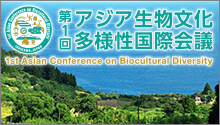The Japanese-style garden workshop, which was the idea of OUIK’s research associate Juan Pastor Ivars, was implemented as part of a model sightseeing tour.
Kanazawa City was approved as an SDGs Future City by the Japanese government in 2020, and Kanazawa SDG experience model tours have been carried out under the theme of “responsible tourism”. This time, the garden workshop was incorporated into a model tour. During the tour, participants learn about little-known functions of Japanese-style gardens, such as provision of a green infrastructure for preserving biodiversity, and alleviation of the heat-island phenomenon. Also, they gain an understanding of the value of Japanese-style gardens through the tea ceremony and garden maintenance work.
As garden maintenance is hard work for the elderly garden owners, this workshop also aims to create a platform for learning for both residents and visitors, and to establish a new scheme for the maintenance of gardens, involving a variety of people. The model tour was realized through Juan’s wish to create a tour that enables people from all over the world to participate in the preservation of Kanazawa’s Japanese-style gardens.
The tour started with a stroll along the spiritual road called “Heart’s Path” (kokoro no michi), which passes through the Mt. Utatsu temple area near the Higashiyama chaya area. The participants were professional tour guides with a good understanding of the various needs of tourists. They said that tours that include interacting with local residents are by far the most popular. While sharing narrow streets with local residents, they listened to Juan’s explanations, before arriving at the destination, Eikyu-ji Temple.
With a history of over 250 years, Eikyu-ji Temple used to be the Maeda family’s official place of prayer. First, Mr. Hongo, who is in charge of temple management, explained the temple’s history and the problems with regard to garden management. Then, participants started tidying up the garden. They worked hard to remove marsh marigold, an invasive species that spreads in the spring. There is a tall zelkova in the garden; participants measured its circumference and participated in a survey with regard to possible registration of the tree for preservation by the city.
Participants commented that they were excited about the work, since it was something that tourists can’t normally do. They removed more than ten bags of weeds in one hour. After weeding, while enjoying Kanazawa’s twig tea and sweets, they shared their impressions of the workshop as a tour activity.
The comments from the participants included: “Tourists visit a place because they love it. They look for opportunities to interact with local residents, and for something to do to make the place better.” “This tour has value as an opportunity to gain a thorough understanding of Kanazawa’s culture and history.” “This tour gave me an opportunity to really think about SDGs.” “Care must be taken to avoid the misunderstanding that this is an event associated with a certain religion.” “Thought should be given to how to allow elderly people to participate in garden maintenance.”
We will continue to explore how garden workshops can be part of sightseeing tours, so that many more people will be able to participate in them.




